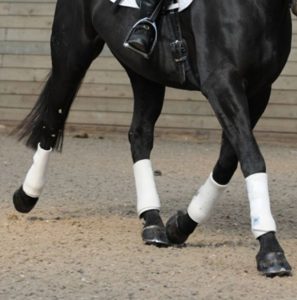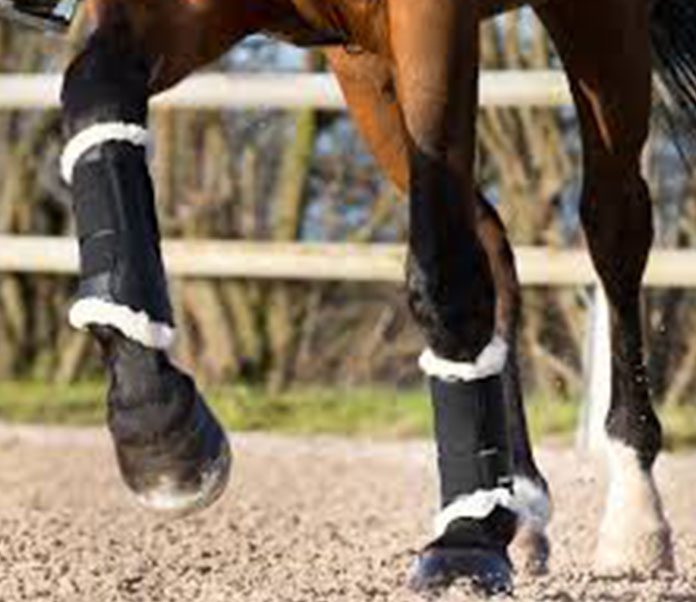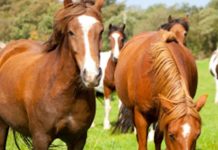Lunge with the right equipment: splint boots with bell boots/wraps, a properly fitted halter, lightweight lunge whip and a lunge line you can work with in comfort.
Boots will protect their legs from injury if they happen to have an over reach. What you don’t need is for your horse to injure itself and then remember the experience as being a negative one. The lunge whip by the way, is an aid only and not your primary training tool.
Try to lunge in a round pen or an enclosed area of some sort with rounded corners, and flat ground. Remember the goal is to keep control of your horse at all times, so don’t try this in an area without fencing.
 When you start your lesson, always start with one direction and stick to it. If you choose to work on the left side, then always hold your lead in the left hand with excess line in your right (and the whip as well, if you choose to use one) and keep all body positions the same. You start to the left, pointing to the left, leading the horse’s nose to the left and move your feet, swing your rope end (or lift the whip) towards the horses hip to ask for forward movement. If you horse keeps facing you then guide them forward by swinging your rope/whip toward their shoulder.
When you start your lesson, always start with one direction and stick to it. If you choose to work on the left side, then always hold your lead in the left hand with excess line in your right (and the whip as well, if you choose to use one) and keep all body positions the same. You start to the left, pointing to the left, leading the horse’s nose to the left and move your feet, swing your rope end (or lift the whip) towards the horses hip to ask for forward movement. If you horse keeps facing you then guide them forward by swinging your rope/whip toward their shoulder.
Ok, success, your horse is moving in a circle to the left. Move with him, staying in the middle of the round pen with sufficient line played out. Keep the whip low, or your rope end low and walk quietly. The thing you want to teach the horse is, that if YOUR feet are moving, his feet need to be moving. Keep your body behind his withers to ensure forward movement. If you get in front of the withers, your horse will stop.
If your horse does stop, calmly keep moving and touch the whip or rope end to his hind legs to keep him moving until YOU stop your feet. The major reason this approach will work, and work well, is that this is totally natural behavior for a horse. Watch a herd in the field and see what happens when one stomps its feet and then moves off. The rest follow, they don’t stop to ask questions, they just go, and go at the same rate of speed set by the head horse in the pecking order. If you lunge in this manner, your horse will understand your body language almost immediately. First the body language, then add voice to the body language.

































